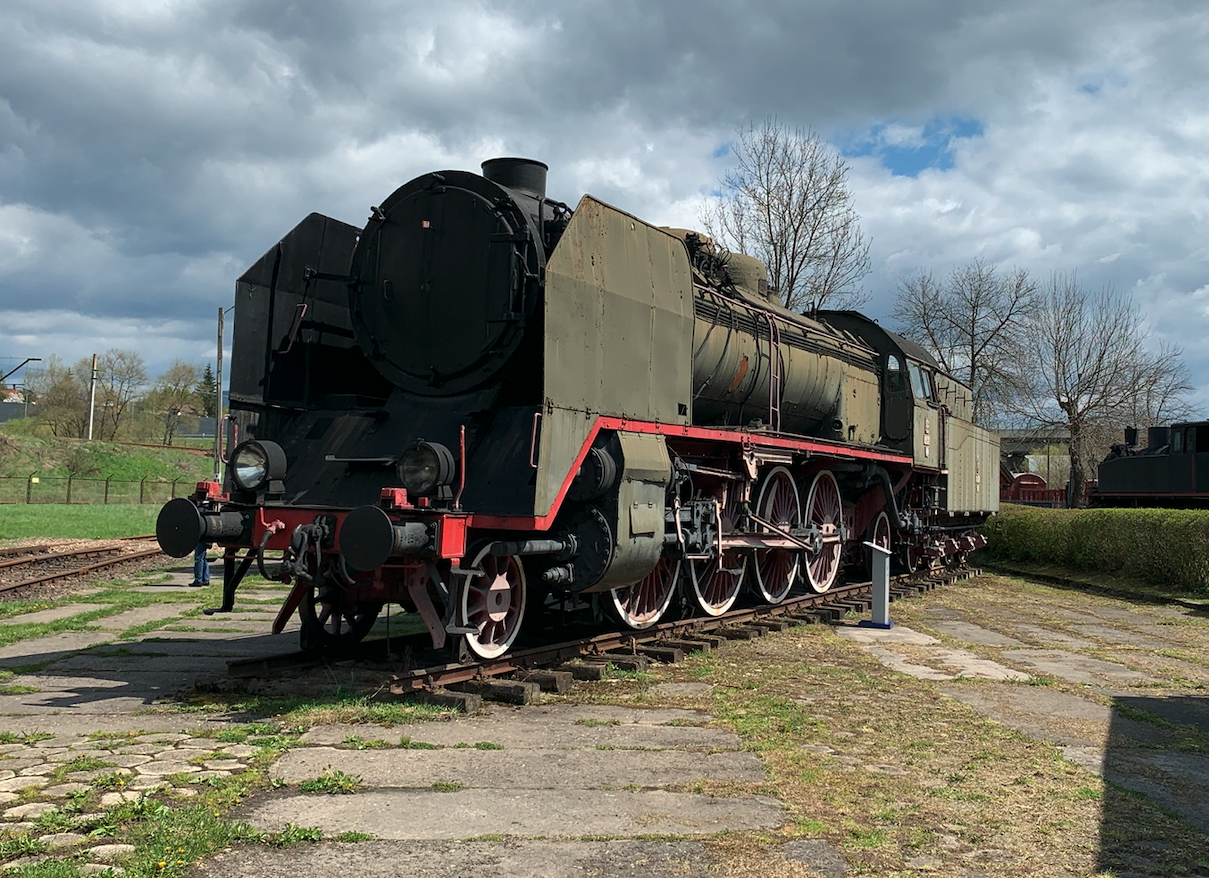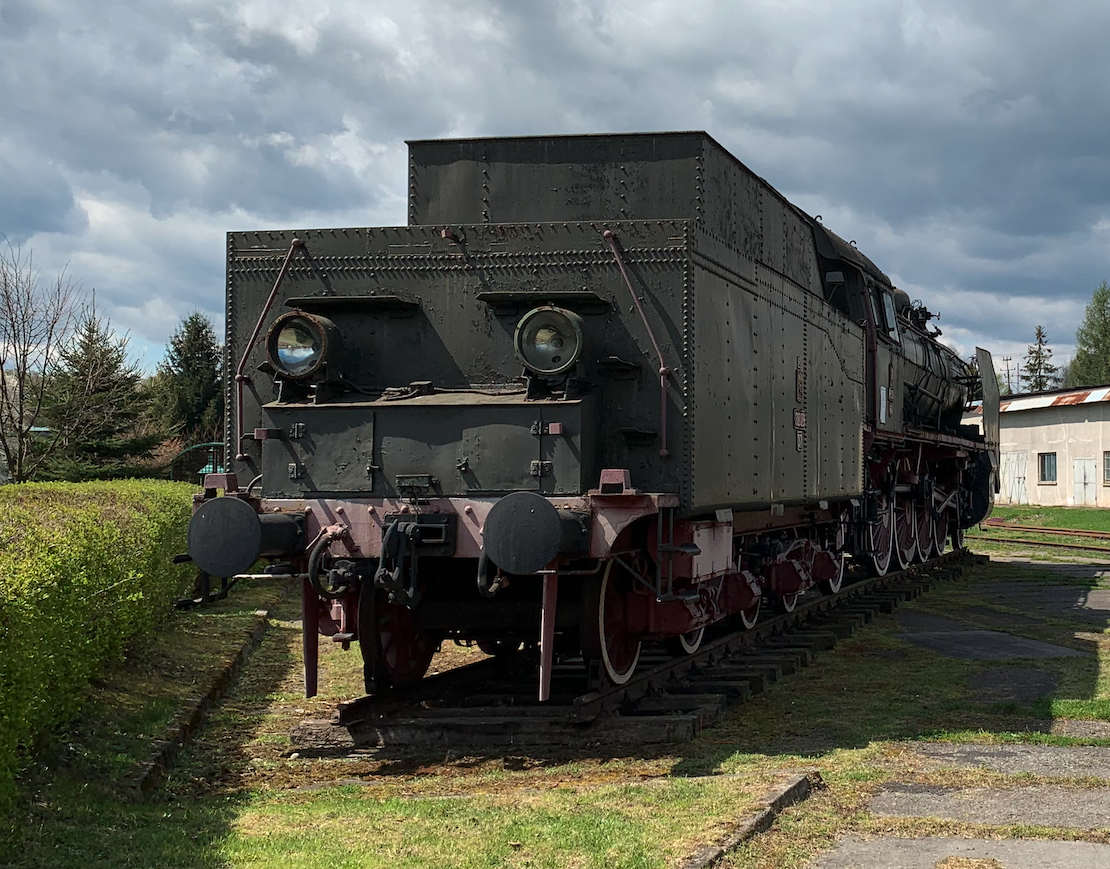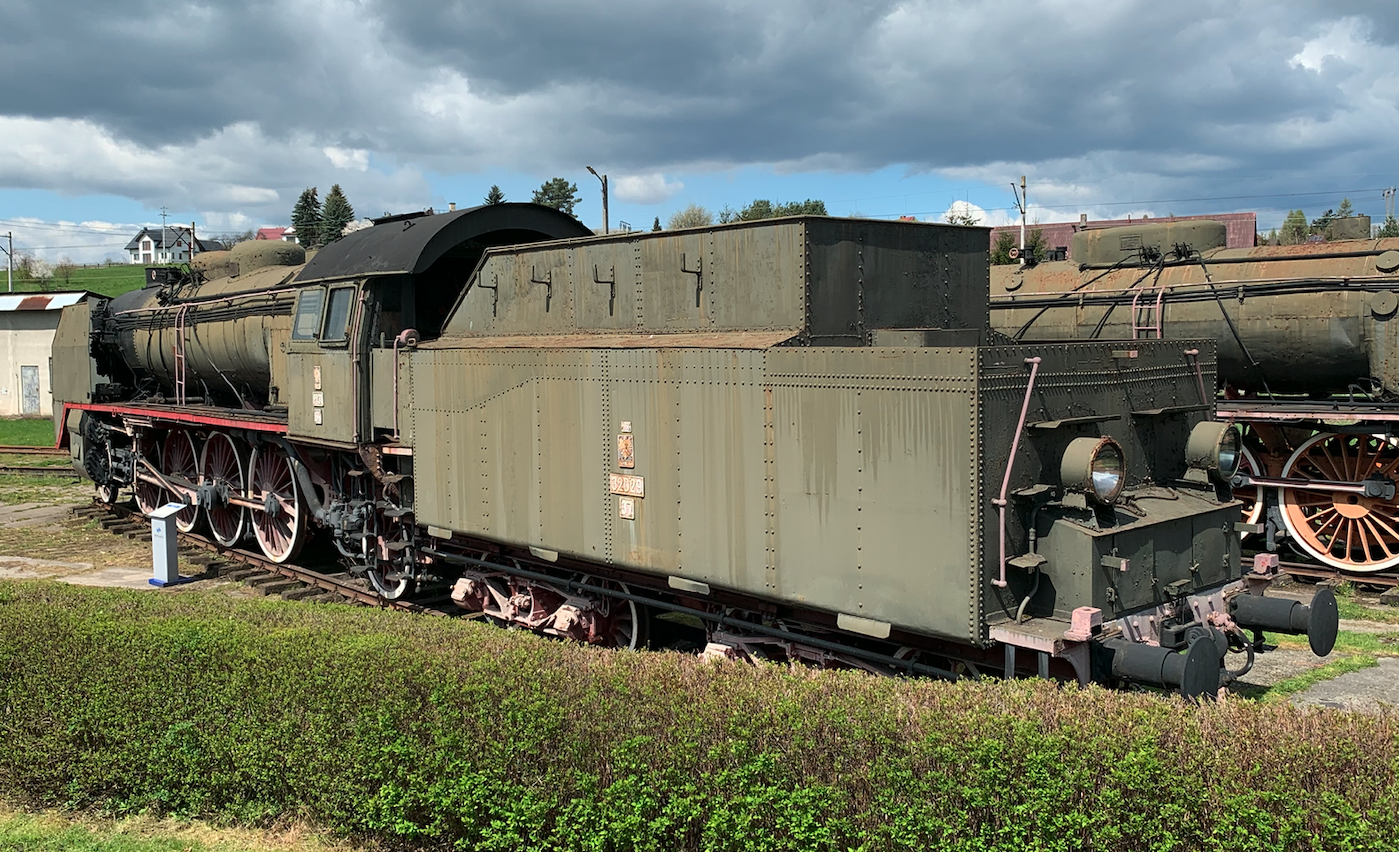Chabówka 2021-12-31
Polish Steam Locomotive Pt31.
The Pt31 locomotive is a Polish locomotive developed in 1931, but work on it started in 1929. The construction team was headed by engineer Kazimierz Zembrzuski. The steam locomotive was developed with the 1'D1 'axle system, and the Polish designation is a small letter "t", meaning oOOOOo. The reference number Pt31 stands for a Pospieszna locomotive with a "t" axle system, designed in 1931.



The fast locomotive Pt31 was developed in the design office of the factory in Chrzanów. At the same time, the Pu29 steam locomotive was being developed and developed in Poznań. Both projects (Pu29, Pt31) were supervised by engineer Antoni Xiężopolski from the Warsaw University of Technology, who made sure that the new locomotives had as many unified components as possible.
At the beginning, the Pt31 steam locomotive was ordered by the Ministry of Transport in the amount of three copies. In the period from October 1932 to November 1932, all locomotives were submitted for testing. The locomotives were given serial numbers 518, 519, 520.
Due to the planned high speed of the steam locomotive, it was wanted for the machine to fit the arches as well as possible. In Chrzanów, people opted for the Krauss-Helmholtz front uniaxial bogie. In Poznań, a two-axle front bogie was preferred for the Pu29 locomotive. Both strollers performed well in the tests. Eventually, the Pu29 locomotive received a front two-axle bogie, and the Pt31 had a front bogie.
The tests of the Pt31 steam locomotive turned out very well. On the difficult Strzemieszyce - Skarżysko Kamienna route, a steam locomotive with a train weighing 660 tons, had 15 cars, reached an average speed of 57 km / h. The maximum speed limit on this trail was 80 km / h, because the trail needed renovation.
In another test, on the Warsaw - Poznań route, with a train weighing 600 tons, it reached a maximum speed of 105 km / h. With a train weighing 300 tons, it reached a speed of 110 km / h.
Both the Pu29 series and the Pt31 series steam locomotives received very positive opinions. However, only the Pt31 locomotive was put into serial production. The main reason for this decision was the length of the Pu29 steam locomotive chassis, which made it impossible to rotate the locomotive on turntables with a diameter of 22 m, thus limiting their wider use.
The production of Pt31 steam locomotives was placed in the "First Locomotive Factory in Poland SA" in Chrzanów. Serial locomotives were built from June 1934. 98 locomotives were built for the invasion of Poland by the German army. During the German occupation, the enemy ordered the construction of another 12 locomotives from already manufactured components. The occupier incorporated 54 locomotives into his railways. Most of the steam locomotives were sent back to Germany and Austria. About 24 locomotives were taken over by the Russians after September 17, 1939, and they began to convert them to a wide track.
After the Second World War, Poland regained some Pt31 steam locomotives. In total, 64 locomotives returned to Poland after the war. The Pt31 steam locomotives received a new Polish numbering. They served in the Polish State Railways until the beginning of the 1980s. The operational experience showed that the Pt31 steam locomotive was one of the most successful locomotive designs. The design features that enable easy starting and running of heavy passenger trains, even in very difficult conditions, turned out to be a great advantage of the Pt31 steam locomotive. On the basis of the Pt31 steam locomotive, the Pt47 steam locomotive was developed in Poland after the Second World War. Currently (2021), there is a Pt31-64 steam locomotive in Chabówka, and a Pt31-49 steam locomotive in Jaworzyna Śląska.
Steam locomotive Pt31-64.
The Pt31-64 steam locomotive, factory number 721, was put into service in 1938. The steam locomotive was built and taken over by PKP as Pt31-76. The steam locomotive served in the Polish State Railways until the beginning of September 1939, when it was seized by the occupant. The occupant changed the locomotive numbers to No. 19 147. After the Second World War, the locomotive returned to the Polish State Railways in July 1955 and was very worn out. After the renovation, it got new numbers Pt31-64. The tender number 32D29-37 was attached to the locomotive.
The Pt31-64 steam locomotive was sent to work in Inowrocław, then in Olsztyn, Toruń (1957), Iława (1958), Rzeszów (1959), and Kraków (1960). He returned to Toruń (1964), Olsztyn (1969), Skarżysko Kamienna and Zamość, where he was removed from the state of the Polish State Railways in 1979. As a reserve in the event of "W" it was on the slopes in Skarżysko Kamienna, Kielce and Sędziszów. In 1984, it was transferred to the Museum in Warsaw. In August 1984, it was repainted at ZNTK Bydgoszcz. In 1992, he was transferred to Chabówka.
T-T data of the Pt31 steam locomotive:
The empty weight of the locomotive is 97 700 kg. The service weight of the steam engine is 106 200 kg. Length 15.00 m. Length with tender 23.95 m. Height 4.55 m. Driving wheels diameter 1.85 m. Roller diameter at the front 1.00 m. Wheel diameter at the rear 1.20 m. Pressure in the boiler 15 atm. The heating area of the boiler is 239 m2. The heating area of the superheater is 90.20 m2. The grate area is 4.5 m2.
Tender type 32D29 is four-axis. Tender takes 32 m3 of water and 10 tons of coal. The total weight of the locomotive with tender is 174,700 kg.
Written by Karol Placha Hetman
